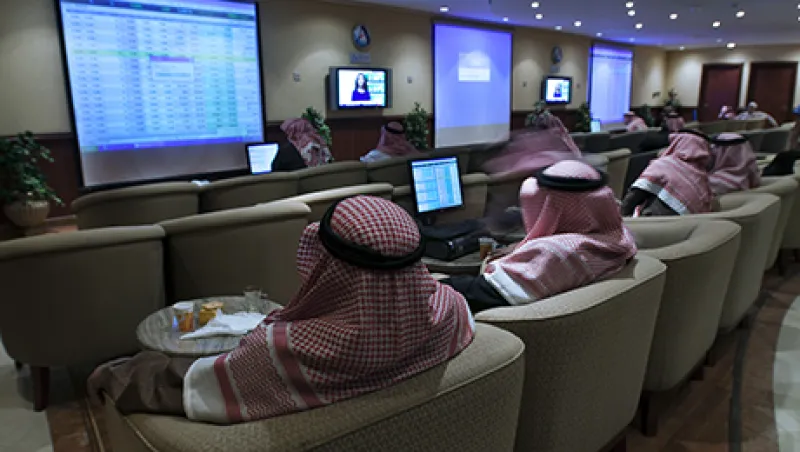
Investors watch share price movements displayed on screens in a hall at ANB Invest, the investment arm of the Arab National Bank, in Riyadh, Saudi Arabia, on Wednesday, Jan. 25, 2012. Saudi Arabia's Capital Market Authority is in discussions with international banks to open the country's stock exchange to foreign investors early next year, three bankers familiar with the matter said. Photographer: Waseem Obaidi/Bloomberg
Waseem Obaidi/Bloomberg

